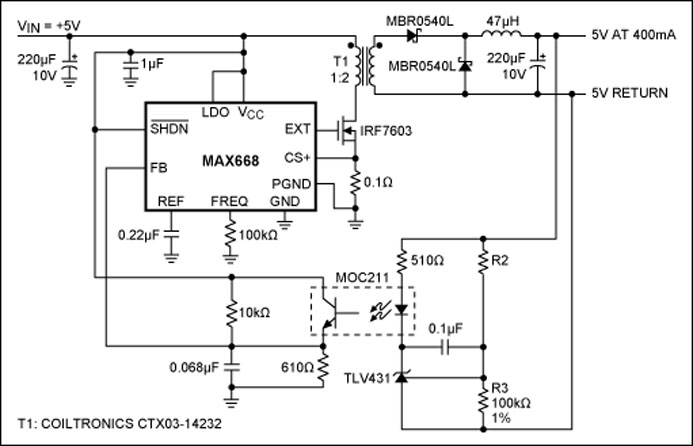What is power supply isolation?
Isolation is the electrical or magnetic separation between two circuits and often used to separate two distinct sections of a power supply. The isolation provides a barrier across which dangerous voltages cannot pass in the event of a fault or component failure. This barrier ensures that the electrical equipment is safe by preventing electric shock and fire hazards. In addition, the power supply isolation breaks the ground loops and thereby eliminating noise in the electrical systems.
Reasons for isolation in electrical equipment
- Safety: to protect the operator from dangerous voltages
- Voltage level shifting
- To provide galvanic isolation in which the two isolated circuits communicate without a direct conduction path
- Prevent ground loops
- The isolation protects the equipment from the line-level events such as surges, lightning strikes, etc.
Power Supply Isolation Methods
The three commonly used methods for isolation are:
- Physical power supply isolation using a media such as insulation, a dielectric medium, air gap or any other non-conductive path between conductor surfaces. This is the most basic isolation method that prevents any electrical or magnetic interaction.
- Transformers which provide isolation through magnetically coupling the primary side to the secondary winding. In addition to the isolation, a transformer provides other functions such as, voltage step-down or step-up, multiple outputs or voltage level translation.
- Optocouplers: The isolation is provided by an air gap and the signal is transferred through the using light. The two major types in this category are:
- IC package which consists of a light emitting and a light receiving semiconductor device in one package. These are commonly used in the feedback circuit from the secondary to primary across the supply’s isolation boundary. These can handle isolation voltages in the order of 3 KV.
- Optical Fibers: these are used for high voltage supplies in tens or hundreds of Kilovolts isolation in addition to control and data signals transmission.
Most AC to AC, AC to DC and DC to DC converters use internal transformers to provide electrical (galvanic) isolation between the input and the output. Most supplies will also incorporate an optical isolation on the feedback path from the output to the input side as shown in figure 1 below.
Figure 1: A typical regulated 5 Volts isolated power supply circuit – Image Credit
Measuring isolation in Power Supplies
The two commonly used methods in determining the quality of isolation are:
- Resistance measurement between the two isolated circuits.
- Hi-pot test which measures the leakage current between the isolated circuits.
Isolation is used in power supplies, and when the low voltage side of a piece of equipment needs to be interconnected with other equipment.
